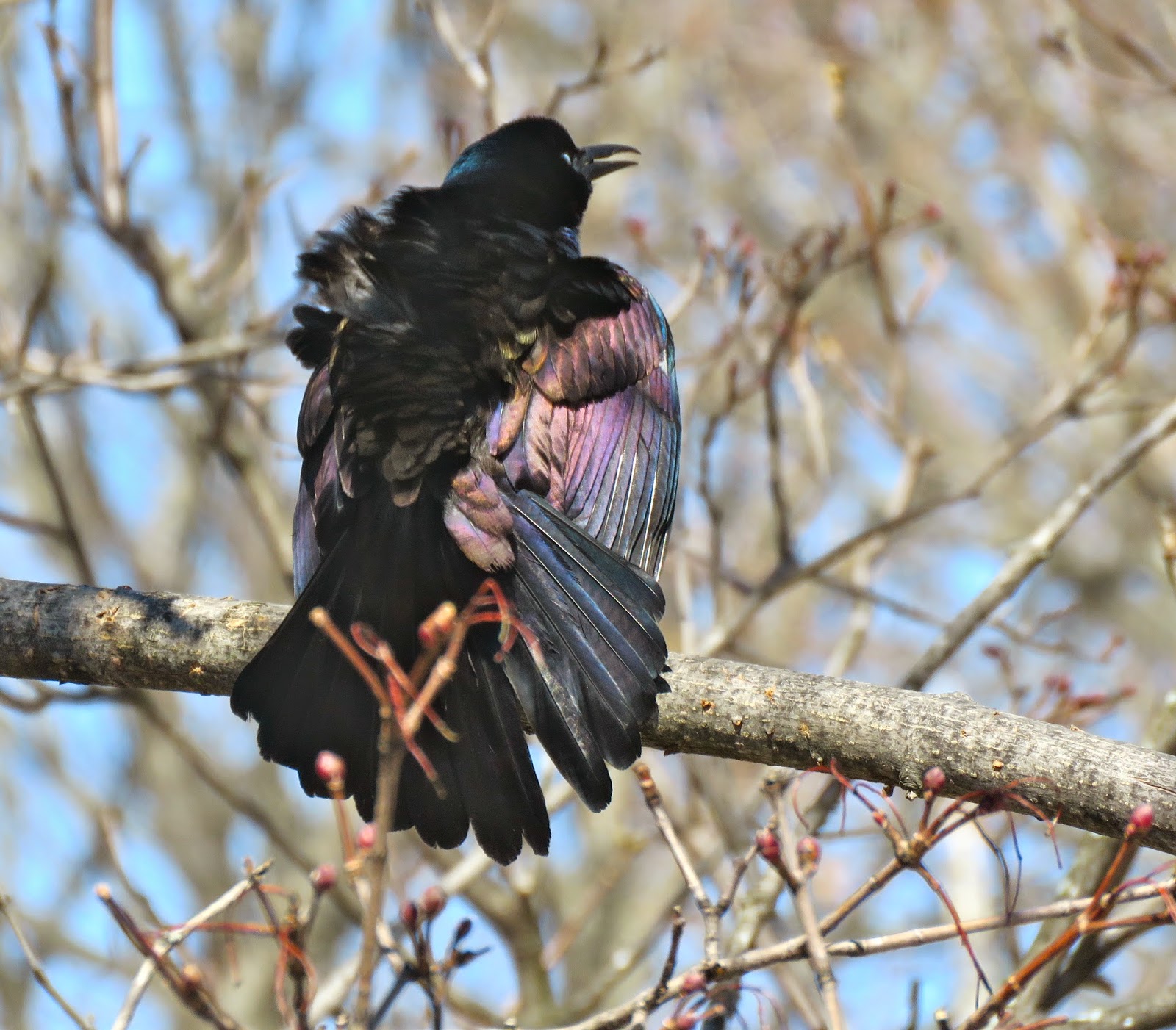This winter people in Boston were often on "french toast alert", meaning that whenever there was another snow storm coming in everyone went out to buy milk, bread and eggs. I also made sure I had lots of bird food around! There were days when I had hundreds of visits. Since I got my new Canon camera I've been able to zoom in really close and here are some of the pictures I like the most.
Many birds, especially the mourning doves, often spent part of their day in the maple by my feeder. On a cold day their feathers were all fluffy. Often I had up to 30 of them, waiting for me to throw seeds on the floor for them every morning.
Another regular was this house finch. One day in late March he started singing, and soon after he was joined by a mate.
I think many people have often wondered what evolutionary benefit a bird can get from being so flamboyantly colored, like the cardinal. Surely any predator can spot him for miles? But in the green shades under the canopy, red is not shining bright but looks more brownish-dull. The birds can move from light to shade and use it to their advantage in mating games. At least that's what David Haskell speculates on in his wonderful book "The forest unseen", which I just finished reading.
I find the female cardinal almost more beautiful, once I've seen her subtle colors up close.

A couple of wrens were also regulars - they kept singing through much of the winter!

I learned that although nuthatches join mixed species foraging flocks during the winter, they remain in pairs and do not seek new mates in spring.

A junco gets a break from the cold and does some grooming in the sun.

Downy woodpeckers are some of the most frequent visitors, but the redbellied is not as common. Here they are in the same maple, which must now be one of the most pecked-on trees in the neighborhood!

A single tree sparrow was hanging out with the house sparrows this year.
Every morning and every afternoon at dusk the Whitethroated sparrows showed up. This afternoon sunset lit gold on the branches behind.

There were always chattering and bickering goldfinches around.
Another type of visitors soon showed up as well. I think this was a sharp shinned hawk, but it is not easy to tell. The tail is long and slender with a sharp end.
This on the other hand I think is the Cooper's hawk, that came almost every day for a few weeks. It was big so I assumed it was a female. I never saw her hunt so maybe she just came to sit and watch. It was easy to tell when she arrived because all the song birds went dead quiet, and the mourning doves all took off with a loud whistle of wings.
Details of feathers
Quite fierce...
On another day this juvenile Cooper's came by like a storm wind. Not yet red eyes and with a different pattern on the chest, it was still very impressive and very capable of stirring up the feeder community.

One of the snowy days this redtailed hawk stopped by, periodically shaking the snow off much like a dog would do.

During a trip to Vermont on February break I stopped by a garden when I saw a flock of birds in a fruit tree. Bohemian waxwings! What a treat.
Before the woods were covered in 4 feet of snow I managed to get out to a few of my treasured places.
At Ponkapoag pond reservation in the Blue Hills I saw a hermit thrush
that had not yet migrated this December day, I wonder if he stayed for
the rest of the winter. His song is one of my most favorite spring sounds.
An American tree sparrow posed at Millenium park down by Saw mill brook.
That's also where I saw this raven, through the car window on the way out!
My friend in Carlisle had a slightly different set of feeder visitors than my inner-city station. Bluebirds are just too blue to be real...
Bluebird and Hairy woodpecker
Pine siskins and goldfinches go well together.
The siskin's bill seems longer and more pointed, to reach deep into pine cones.
Goldfinches with a patchwork of tan and yellow feathers. It's snowing, but hormones are bringing out competitive behaviors along with the new molt.


































































